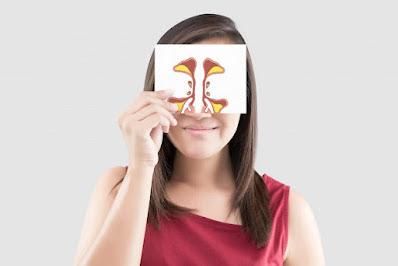Understanding Deviated Septum and Its Link to Snoring
What is a Deviated Septum?
The nasal septum, a thin wall of cartilage and bone dividing the nasal cavity into two nostrils, can become displaced or crooked, causing a deviated septum. This misalignment obstructs airflow through the nose, leading to various symptoms and complications.
Causes of Deviated Septum:
Several factors contribute to a deviated septum:
- Trauma: Injuries to the nose, such as those from sports accidents, falls, or automobile collisions, often result in a deviated septum.
- Congenital Defects: Genetic factors or abnormal fetal development can lead to a deviated septum from birth.
- Age-related Changes: Natural aging processes can cause the nasal septum to become deviated over time, altering the structure of the nasal passages.
Symptoms of Deviated Septum:
Symptoms of a deviated septum vary in severity and may include:
- Nasal congestion: Difficulty in breathing through one or both nostrils.
- Nosebleeds: Dryness or irritation of the nasal passages may lead to nosebleeds.
- Facial pain: Individuals may experience pain around the nose and sinus areas.
- Recurrent sinus infections: Impaired drainage can result in increased susceptibility to sinusitis.
- Snoring: Disrupted airflow through the nasal passages can contribute to snoring during sleep.
Diagnosis:
An ENT (ear, nose, and throat) specialist typically diagnoses a deviated septum through a physical examination. Using a nasal speculum, the doctor inspects the inside of the nose to assess the degree of deviation. Imaging tests such as nasal endoscopy or a CT scan may provide a more detailed view of the nasal anatomy if necessary.
Treatment Options:
Treatment for a deviated septum depends on symptom severity and its impact on an individual's quality of life. Treatment options may include:
- Medications: Over-the-counter or prescription nasal decongestants alleviate nasal congestion and inflammation.
- Nasal Septoplasty: Surgical correction may be necessary for severe symptoms unresponsive to conservative treatments. Septoplasty involves straightening and repositioning the nasal septum to improve airflow.
- Nasal Dilators: External devices like nasal strips or internal devices such as nasal dilator cones can keep nasal passages open during sleep, reducing snoring and improving breathing.
Relationship Between Deviated Septum And Snoring:
A deviated septum can contribute to snoring by obstructing airflow through nasal passages during sleep. Narrowing or blockage of the nasal airway causes soft tissues in the throat to vibrate as air passes through, resulting in snoring. While not all individuals with a deviated septum snore, those who do may experience disrupted sleep patterns and daytime fatigue due to poor-quality sleep.
Conclusion:
Understanding the causes, symptoms, diagnosis, and treatment options for a deviated septum is crucial for individuals experiencing nasal congestion, snoring, or related issues. Consultation with a qualified healthcare professional is essential for proper evaluation and management tailored to individual needs if you suspect you have a deviated septum or experience chronic snoring.






No comments:
Post a Comment